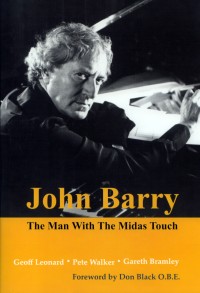Bees-A-Buzzin’
(Edrich Siebert)
Analysed by Robert Walton
The most recent volcanic eruption in Auckland, New Zealand took place about 800 years ago. It created Rangitoto Island at the mouth of the Waitemata Harbour. Fast forward to the 20th century and during WW2 a 6 year old boy was walking barefoot in the sand on the mainland opposite Rangitoto along Takapuna Beach, when he suffered his own personal ‘eruption’ - a nasty bee sting! Yes, it was me! There were no EpiPens in those days. By the time we got home my face was completely swollen and unrecognizable but the combination of a doctor and a brandy seemed to do the trick. I gather it was touch and go for a while. Luckily I have never experienced another. All the more reason to always carry an EpiPen. So hearing this composition brings it all back. I can’t help feeling sorry for my attacker though.
I never saw or heard the actual bee, but anytime Dolf Van Der Linden’s Orchestra happens to be playing Bees-A-Buzzin’ I’m straight back to the scene of the crime! There’s absolutely no doubt about the title of this piece, which enters instantly. The opening busy busy section is a good test for an orchestra especially one as good as this. Up, down and around goes the scale-like tune delivering the appropriate mood.
And so to a short secondary theme giving us just the right contrast to the main melody, which is standing by to rejoin the piece. And then we’re immediately into the bridge for a third tune adding yet another building block to this brief journey of continuous rhythm. The listener somehow feels freer (if that’s possible in this context) and slightly relaxed but as soon as the bee returns to its normal work of sipping the nectar, the melody takes on a more business-like tension.
Of course the most famous ‘bee’ tune is Rimsky-Korsakov’s Flight of the Bumble-bee from his 1900 opera “The Tale of Tsar Saltan” with a more oriental flavour containing 50,000 notes! It’s intended to evoke a chaotic and rapidly changing flight path of a bumblebee. It certainly succeeds.
And in its own way so does Seibert’s Bees-A-Buzzin’ if somewhat less frenetic. It’s a sort of gentle entry preparing you for the hard chromatic world of Rimsky-Korsakov!
Heard on Guild Light Music
Confetti GLCD 5175
3 comments
-
 posted by Tony Clayden
Saturday, 20 February 2021 14:21
posted by Tony Clayden
Saturday, 20 February 2021 14:21
The Frank Perkins ESCAPADE mentioned by William may be found on GUILD GLCD 5218
Comment Link -
 posted by William Zucker
Monday, 15 February 2021 01:30
posted by William Zucker
Monday, 15 February 2021 01:30
I just this moment listened to this piece actually in two different versions; the one by Dolf van der Linden that Bob refers to, and one by a group calling itself the Leyland Band. This latter is a bit faster, due no doubt to this being a smaller ensemble, sounding lighter than the full orchestra used by Dolf van der Linden.
Comment Link
I agree with Tony about the passing reference to Paganini's Moto Perpetuo. More immediate a resemblance is called to me by a piece by composer Frank Perkins, that appeared in an album of his entitled "Pops Concert," which I had occasion to refer to in my article a few years ago, "Nooks and Crannies in the Light Music Genre" or something along those lines. The Frank Perkins selection I have in mind is "Escapade" and it too features a rush of notes in its main idea; however, the orchestral textures here are far clearer and easier to follow, aside from the contrasts between the ideas being sharper and more easily picked up. -
 posted by Tony Clayden
Sunday, 14 February 2021 14:08
posted by Tony Clayden
Sunday, 14 February 2021 14:08
Robert didn't mention that Edrich Siebert was the alias of Stanley Smith-Master.
Comment Link
I've known the piece since I was a kid - it used to get airplay on the BBc Light programme
It has always struck me as having a slight resembelance to 'Moto Perpetuo' by Nicolo
Pagannini
Leave a comment
Make sure you enter all the required information, indicated by an asterisk (*). HTML code is not allowed.

